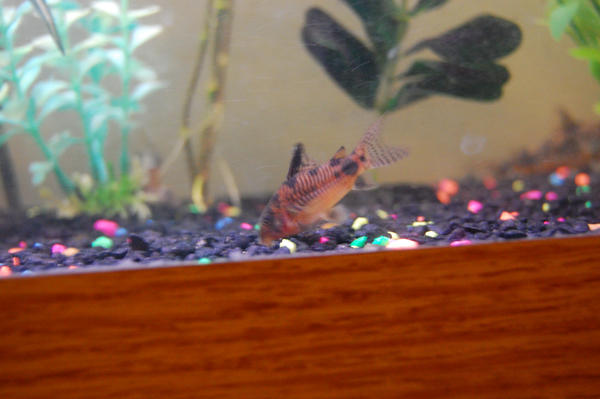Mike_Noren wrote:In nature most hybrids are selected against. This is most obvious when you have overlapping species with a narrow hybrid zone: that means that the hybrids have reduced viability or ability to reproduce. A typical example is the hybrid zone between the hooded crow and the carrion crow in Europe; there is a minute gene flow across the zone, but the hybrid offspring is heavily selected against. Reduced viability is probably also why species like roach and rudd remain distinct despite regularly hybridizing and producing fertile hybrids. If the hybrids are fully viable the two species would rapidly coalesce, as has happened with the red and the gray wolf in the USA.
I agree with Mike that hybrids MUST be selected against, otherwise species would merge. However, I remember a talk at the same Journal of Fish Biology conference in 1990 (I think), where they were looking at backcrosses of hybrid cyprinids (I'm assuming these were artificially fertilised), where fry survival (admittedly in the lab) was substantially greater for both hybrids and backcrosses, than for same species fry (roach-bream and rudd-bream showing particularly good survival rates). Unfortunately I think this talk didn't make the journal edition due to late submission, otherwise I'd have dug it out to confirm their results and search for related papers. The fact that this is lab survival and artifical fertilisation puts a few question marks over the validity of the results in the real (natural) world, but the findings were pretty surprising to me.
Another anecdotal (so of limited value) case: I fish the tidal River Trent a fair bit, and in the early to mid-1980s, roach-bream hybrids were the most prevalent fish to catch. Most of the matches I fished in summers during this period (where gross weight of fish caught, not number/size, determines results) were won with catches consisting largely of roach-bream hybrids (and most of the fish caught in the match would also be these). However, in the late 1980s the switching off of most of the coal-powered power stations which used the Trent for water cooling, reduced water temperature by a couple of degrees in summer (possibly slightly more in winter), plus an alleged improvement in water quality, saw these hybrid populations crash. Bream, carp, roach, chub, and bleak numbers also reduced markedly at this time, although barbel numbers increased exponentially (at least in terms of fish caught, which might not be the best measure of fish abundance). Roach-bream hybrids still occur in most waters where both species occur, but are normally (as expected) the exception rather than the norm. I've no idea why their numbers were so high during that period and don't know if it was temperature or water chemistry that gave them an apparent advantage.
I'm also assuming that most (though probably not all) hybrids are accidents of groups of different species spawning at the same site at the same time, which makes it all the more amazing that in certain conditions, hybrids can be so prevalent. I have wondered whether the fish, though fertile, might get a bit confused at spawning time- do they spawn with each other, or with one of their parent species? If the parent species have different spawning/gonad development triggers, how does that affect spawning? Whilst I'm fairly sure I've seen backcrossed fish (fish that look more like a bream than a typical roach-bream hybrid, or more like a roach), I've never been totally certain that's it's not just a slightly odd hybrid. However, despite the prevalence of hybrids (I've also seen a lot of natural carp-crucian carp hybrids, although they also produce these commercially for fisheries under the somewhat confusing term of "f1"), the number of presumed backcrossed fish I've seen is comparatively miniscule.





